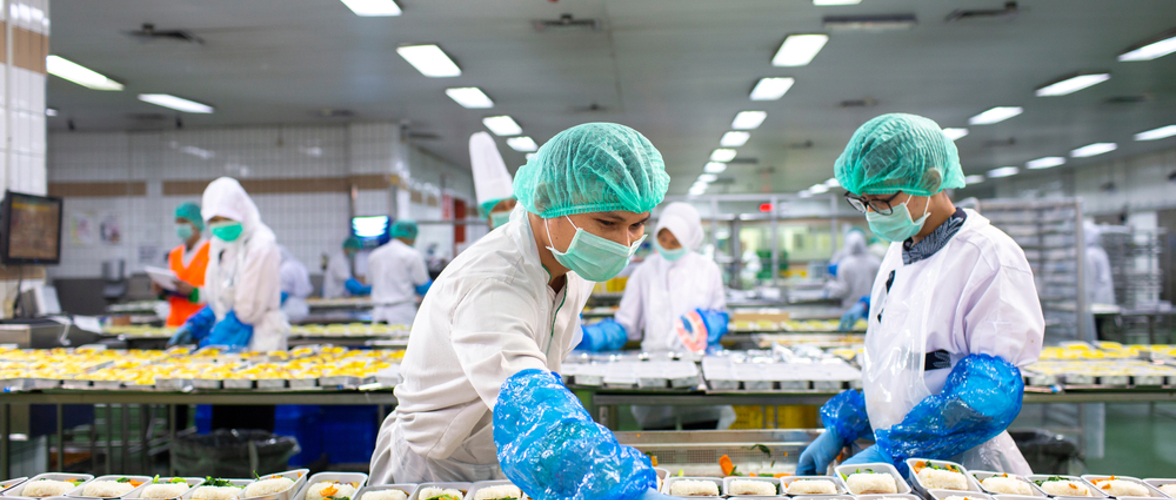Key Takeaways
- Price fixing concerns have officially escalated. The Australian Competition and Consumer Commission (ACCC) has announced its inquiry into the conduct of the Australian supermarket sector.
- A comparison of the UK and US supermarket industries shows their weaker market share concentration relative to their Australian counterparts.
- UK and US target markets are an order of magnitude greater, giving their industries more room to fit multiple large competitors.
- Steady gross margins and lower returns on invested capital compared to UK and US giants provide an alternative argument for accusations of price gouging levied at Coles and Woolworths.
Supermarkets provide a vast range of products from various sectors like food, beverages, household items, clothing, electronics. They act as a vital part of supply chains and consumption patterns.
With rising prices for goods and services across the board, consumer exposure and reliance on groceries and other supermarket necessities has shone a spotlight on price dynamics, with anti-competitive claims continuing to crop up:
- Price Gouging: Typically refers to a drastic hike in the prices of goods to a level much higher than is considered reasonable or fair, extracting higher profit margins at the expense of the consumer.
- Price Fixing: Also known as ‘cartel behaviour’, this practice involves an explicit or implicit agreement among competitors to coordinate their prices, rather than allowing market forces dictate them.
We can look across international markets facing similar cost-of-living crisis and identify common trends and critical differences. Inflationary pressures have hit the United Kingdom (UK) and United States (US) population, providing similar pricing precursor conditions to the Australian market.
Major supermarkets

Comparing market shares
Despite their similarities, supermarkets in the UK and US lack the market share seen among supermarkets in Australia.

Global competitors like ALDI and Costco provide the biggest pushback to ColesWorth - the layman’s term for the Coles and Woolworths oligopoly. Additionally, the operating environment in Australia is markedly different compared to the US and UK.

The United Kingdom has faced cost of living pressures akin to its AU and US counterparts. UK supermarket leaders Tesco and Sainsbury’s have noticed an uptick in theft, especially among their pricier items.

US supermarkets are able to expand and capitalise on economies of scale efficiently and have access to larger downstream markets, reducing the need for extreme net profit margins.
Entrenched competition dynamics
Australia
Major supermarkets in Australia have been accused of deceptive discount conduct. These accusations describe supermarkets of raising prices right before dropping them, allowing the companies to market their products as ‘on special’. Additionally, the Australian supermarkets’ chokehold on suppliers opens the door for more intense negotiating tactics, including cutting supplier contract prices to lower their end-user price points.
The cheaper supermarkets in Australia tend to be mid-tier players like ALDI and IGA or more specialised and online-active superstores like Chemist Warehouse and Bunnings.
United Kingdom
In the United Kingdom, supermarkets have been trending towards greater consolidation. The country’s competitive oligopoly is prone to high entry barriers. However, given their population size, returns on invested capital are higher than in Australia, where the two major companies, Tesco and Sainsbury's, need to invest less to expand their store presence and capture similar customer volumes.
Smaller supermarkets and grocery stores struggle to maintain profitability as they face off against the major players.
United States
In the United States, the Federal Trade Commission has moved to block the proposed merger between Kroger and Albertsons. This is due to fears that a consolidation of this magnitude would be detrimental to consumers and would incentivise job losses and store closures.
The differences between these unionised stores and non-unionised grocery giants like Walmart further complicate the market. German mega-company Aldi is also encroaching upon the market, undercutting standard prices to gain market share.
Smaller grocers struggle to compete in the US too, especially as online retailers explode in popularity. Small stores have been finding the greatest ongoing success when establishing in regional towns and securing a loyal customer base.
David vs Goliath
Back in Australia, smaller retailers often struggle facing off against well-known companies. The major brands have also capitalised on loyalty program initiatives to give them an upper hand in the data department. Data collected from widespread loyalty programs and other initiatives gives supermarkets insights into patterns to fine-tune various facets of their operations and strategic planning. This valuable information can be used to enhance every area from store layout and stock management to marketing strategies.
The potential for farmers and growers to exit the industry due to a lack of strong regulatory measures has been a major cause of concern. Stronger and more streamlined regulatory authority could safeguard against this threat.
The growing presence of online retail giants, including Amazon, Bunnings and Chemist Warehouse, factors into this landscape, especially among consumers willing to forgo the convenience of supermarkets to seek out specialised alternatives. Their business practices and policies could influence the sector and its regulatory environment and the ACCC may need to account for this in their proposed investigation.
The profit debate rages on
Australian supermarkets continue to bring home considerably higher profits than their counterparts in Europe or the United States. This has brought even more attention to the market’s uniquely high concentration as a potential causal factor.
A case study on lamb prices has revealed that Coles and Woolworths have slashed prices to ease inflationary pressures on consumer hip pockets. However, farmers would argue that plummeting prices were significantly delayed, taking several months to flow through from oversupplied saleyards to supermarket shelves.

Gaps between farm gate prices and supermarket advertised prices differ across goods and are affected by seasonal conditions, international demand, livestock and cattle population management decisions, among other factors.
This begs the question...
What constitutes anti-competitive conduct?

To tell the full story, the major supermarket’s stable profit margin needs to also be put into perspective of the broader production chain. This relatively slim uptick in EBIT margins could represent healthy competition. Conversely, the lack of volatility could highlight supermarkets’ in a healthy position and overachieving, as volatile upstream costs and lower disposable incomes have shredded profitability at other points for industries in their supply chain.
Coles and Woolworths could argue that their gross profit margins have steadied, with their return on invested capital (ROIC) struggling to keep up with rising costs. ROIC considers the extra investment needed to maintain and expand operations.
The Australian landscape is unique as a result of its expansiveness and smaller population for supermarkets to capture, compared to UK and US markets. With a population of roughly 27 million, the Australian market is outmatched by the UK’s 68 million and dwarfed by 337 million in the US. These different environments show that higher EBIT profit margins might not tell the whole story in Australia. Costs of operating sparse supermarket networks could necessitate different financial strategies.
The regulatory response
The Australian Government’s historically soft-touch approach has highlighted a key regulatory strategy difference with the decisions that the UK have made. The UK has conducted a combination of pricing probes, leading to sanctions and price control threats. Additionally, supermarkets have been incentivised through parliamentary scrutiny to lower their prices.
In 2008, the ACCC conducted a grocery inquiry based on concerns similar to those cropping up today. It found that consumers are often faced with a lack of price transparency and deceptive pricing conduct. Also, planning and zoning restrictions represented a major entry barrier, particularly among key battleground areas that the major players had realistically dominated.
Faced with mounting pressure, the ACCC has launched a new Supermarkets Inquiry for 2024-25.
What are the industries most exposed to supermarket consolidation?

How can these industries adapt to supermarket consolidation?
SME supermarkets and grocery stores
- Unique products: Small supermarkets can differentiate themselves by providing unique or specialised products not available at the major chains. These options can include local produce, artisanal or homemade goods, foreign cuisine and organic or health-oriented products.
- Superior customer service: Smaller supermarkets can better engage with customers and provide superior customer service compared to larger chains. Smaller markets tend to lack self-checkouts, which can be leveraged to strengthen their customer service.
- Community engagement: Smaller supermarkets can position themselves as part of the local community. Supplying community events, supporting local charities or initiatives and sourcing from local growers are valuable to the community.
Meat, vegetables and other suppliers
- High quality produce: Focusing on selling high quality, premium produce which customers are willing to pay more for, rather than trying to compete with low bulk prices of major chains, can capture a specific customer base.
- Establishing partnerships: Developing relationships with local restaurants and businesses to supply their goods can benefit suppliers by generating stable and consistent revenue.
- Online presence: Promoting sales through online channels and offering home deliveries, which could be more convenient for some customers, can give a competitive edge. Sharing recipes and meal ideas online that feature their products can also draw in customers.
Wholesalers
- Manoeuvre towards export markets: By giving licensing or franchising rights to overseas companies, wholesalers can reach foreign markets without establishing physical presence. Foreign customers often associate imported goods with high quality and knowledge of local perceptions can enhance marketing strategies.
- Efficient delivery services: Supermarkets usually require rapid restocking due to the high product turnover. Wholesalers could capitalise on this by offering quick, reliable delivery services.
- Customisable orders and special services: Wholesalers can reach foreign markets without establishing a physical presence by giving licensing or franchising rights to overseas companies. They can also provide special services like in-store merchandising assistance, promotional support or business advisory services.
Global competition outlook
In the future, consolidation of US supermarkets seems unlikely due to regulatory apprehension about major mergers amid sustained high prices due to inflation.
UK supermarkets are more dependent on overseas suppliers than their Western Counterparts. The difficulties arising among international logistics in the Red Sea have damaged critical connections, adding to pricing woes as supplies take longer and become more expensive to transport in the short term. Nevertheless, the situation looks promising for consumers as grocery inflation has already begun to decelerate.
Australian supermarkets are looking to stave off foreign competitors through more investment into ecommerce and the integration and execution of anti-theft AI mechanisms. These investments can minimise theft, emerging as a major asset for farmers and retailers.
Final Word
The ACCC's inquiry into the Australian supermarket sector's pricing conduct hopes to shed light on alleged price fixing and misleading discount strategies. Compared to the Supermarket industry in the UK and the US, Australia shows higher market concentration and lower returns on invested capital, challenging claims of price gouging. Suppliers will be hoping for a stronger and more streamlined regulatory authority to balance the power between supermarkets and farmers, ensuring a fairer distribution of profits and more stable relationships.









